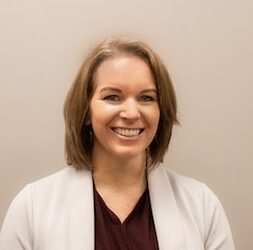IPE Student Resources
Overview of Interprofessional Education and Practice (IPE/IPP)
“Interprofessional education occurs when students from two or more professions learn about, from, and with each other to enable effective collaboration and improve health outcomes. Once students understand how to work interprofessionally, they are ready to enter the workplace as a member of the collaborative practice team. This is a key step in moving health systems from fragmentation to a position of strength” (World Health Organization (WHO). (2010). Framework for action on interprofessional education & collaborative practice. Geneva: World Health Organization. See whqlibdoc.who.int. For more information, visit the Interprofessional Education Collaborative.
The benefits of interprofessional practice include:
- Improved patient care and outcomes,
- Reduction of medical errors,
- Start treatment faster,
- Reduction of inefficiencies and healthcare costs,
- Improved staff relationships and job satisfaction (tigerconnect.com/blog).
Brief Descriptions of Healthcare Professions
Dental Hygienist
Dental hygienists in a clinical role assess, diagnose, plan, implement, evaluation and document treatment for prevention, intervention and control of oral diseases, while practicing in collaboration with other health professionals. For more information, visit the American Dental Hygiene Association at adha.org.
Dentist
Dentists are doctors who specialize in oral health. Their responsibilities include: Diagnosing oral diseases. Promoting oral health and disease prevention. Creating treatment plans to maintain or restore the oral health of their patients. For more information, visit the American Dental Association at ada.org/en.
Dietitian or Dietitian Nutritionist
Registered Dietitians (RDs) or Registered Dietitian Nutritionists (RDNs) are food and nutrition experts. For more information visit, the Academy of Nutrition and Dietetics at eatrightpro.org.
Doctor of Medicine
Physicians diagnose and treat injuries or illnesses. Physicians examine patients; take medical histories; prescribe medications; and order, perform, and interpret diagnostic tests. For more information, visit the American Medical Association at ama-assn.org.
Doctor of Osteopathic Medicine
Doctors of Osteopathic Medicine, or DOs, are fully licensed physicians who practice in all areas of medicine. Emphasizing a whole-person approach to treatment and care, DOs are trained to listen and partner with their patients to help them get healthy and stay well. For more information, visit the American Osteopathic Association at osteopathic.org.
Nursing
Nursing encompasses autonomous and collaborative care of individuals of all ages, families, groups, and communities, sick or well and in all settings. Nursing includes the promotion of health, prevention of illness, and the care of ill, disabled and dying people. Advocacy, promotion of a safe environment, research, participation in shaping health policy and in patient and health systems management, and education are also key nursing roles. For more information, visit the American Nurses Association at nursingworld.org.
Occupational Therapy
Occupational therapy is the only profession that helps people across the lifespan to do the things they want and need to do through the therapeutic use of daily activities (occupations). Occupational therapy practitioners enable people of all ages to live life to its fullest by helping them promote health, and prevent—or live better with—injury, illness, or disability. For more information, visit the American Occupational Therapy Association at aota.org.
Optometrist
Optometrists are primary health care specialists trained to examine the eyes to detect defects in vision, signs of injury, ocular diseases or abnormality and problems with general health. For more information, visit The College of Optometrists at college-optometrists.org.
Physical Therapy
Physical therapists are movement experts who improve quality of life through prescribed exercise, hands-on care, and patient education. For more information, visit the American Physical Therapy Association at apta.org.
Physician Assistants
PAs are medical professionals who diagnose illness, develop and manage treatment plans, prescribe medications, and often serve as a patient’s principal healthcare provider. With thousands of hours of medical training, PAs are versatile and collaborative. For more information, visit the American Academy of Physician Assistants at aapa.org.
Psychologist
Practicing psychologists have the professional training and clinical skills to help people learn to cope more effectively with life issues and mental health problems. For more information, visit apa.org.
Respiratory Therapy
Respiratory therapists care for patients who have trouble breathing—for example, from a chronic respiratory disease, such as asthma or emphysema. For more information, visit the American Association for Respiratory Care at aarc.org.
Social Work
Social workers are professionals who aim to enhance overall well-being and help meet basic and complex needs of communities and people. Social workers work with many different populations and types of people, particularly focusing on those who are vulnerable, oppressed, and living in poverty. For more information, visit the National Association of Social Workers at socialworkers.org.
Pharmacist
Pharmacists prepare and dispense prescriptions, ensure medicines and doses are correct, prevent harmful drug interactions, and counsel patients on the safe and appropriate use of their medications. For more information, visit the American Pharmacists Association at pharmacist.com.

